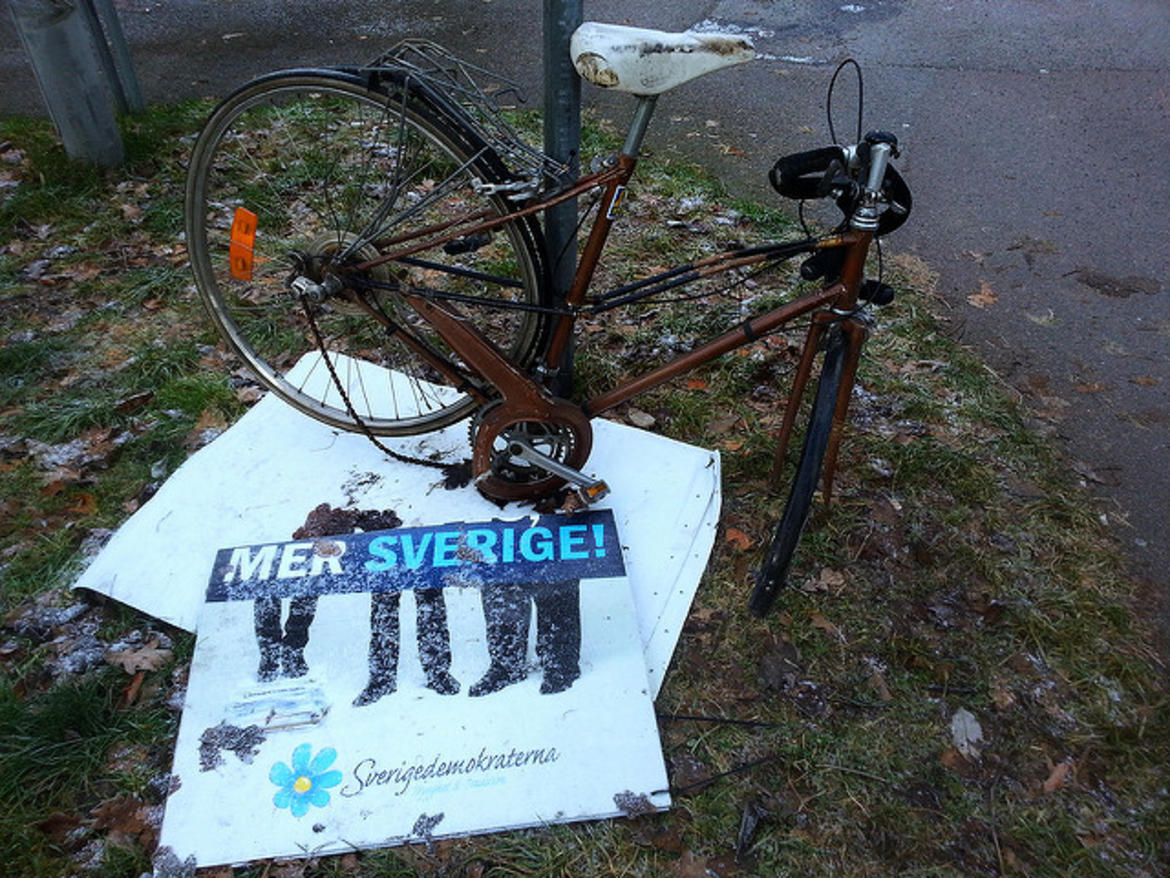Data show no direct correlation between number of refugees and populist vote
Post-vote analysis in Sweden show that there seems to be no direct correlation between the number of refugees living in a given city and the increase in the ballots casted for the Sweden Democrats

Photo: Blondinrikard Fröberg/Flickr (Picture taken in 2014)
Data show no direct correlation between number of refugees and populist vote
Post-vote analysis in Sweden show that there seems to be no direct correlation between the number of refugees living in a given city and the increase in the ballots casted for the Sweden Democrats
Photo: Blondinrikard Fröberg/Flickr (Picture taken in 2014)
Post-vote analysis in Sweden show that there seems to be no direct correlation between the number of refugees living in a given city and the increase in the ballots casted for the Sweden Democrats (SD), the far-right populist party, in the 9 September general election compared to the 2014 one.
On the contrary, as data journalist Jens Finnäs has noted, data show that SD score increase is not related to the per-capita number of refugees: SD performed better both in cities with a high number of refugees per capita and in cities with a low one, and the other way around. The average increase of voting for SD is 3.5 percent units throughout the country, while the average refugee rate is 166.5 per 10,000 inhabitants.
Finnäs gathered SD score and the number of refugees per capita in all 290 Swedish municipalities. The municipality which recorded the highest increase in votes for SD since 2014 is Bjuv (+ 20.7 percent units), where there are 125.3 refugees per 10,000 inhabitants – so below the average rate. The municipality wich recorded the highest decrease in votes for SD (- 6.2 percent units) is Hagfors, where there are 215.7 refugees per 10,000 inhabitants. This could lead to believe that hosting a higher percentages of refugees does not lead automatically to more people voting for an anti-immigration party.
It should be noted, though that the municipality that hosts the highest percentage of refugees, Hogsby (795.8 per 10,000 inhabitants), has recordered an increase of the SD vote almost double as the average (+ 6.49 percent units), while Vellinge, the municipality with the lowest percentage of refugees (30.3 per 10,000 inhabitants), has seen an increase of 3.5 percent units – which is exactly the average.
Notably also, the increase of vote for SD in Sweden’s three major cities – Stockholm, Göteborg and Malmö – is below the average: respectively + 2.8 percent units, + 1.3 percent units and + 3.3 percent units.
As Finnäs concludes, “it is hard (or impossible) to find a single variable (education, crime level, etc.) that would explain the raise of SD. They are increasing everywhere, basically.”
